


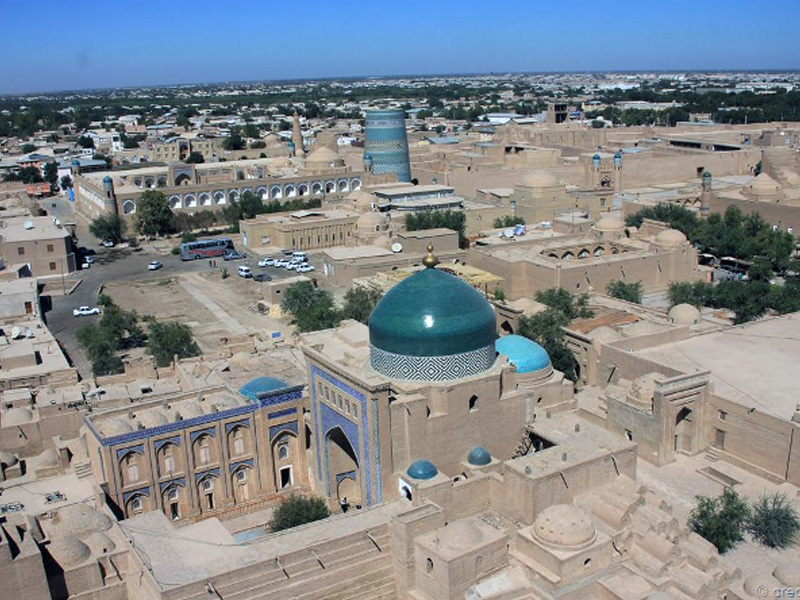
A walk back through time
With a history stretching back more than 2,000 years, the Uzbekistani city of Khiva is a World Heritage Site packed full with the remains of palaces, mosques and mausoleums from the city's Silk Road heyday.
Surrounded by the Kyzylkum and Karakum deserts, the bustling oasis was the last stop for caravans on their way to Iran, carrying everything from paper, porcelain and spices to slaves, horses and fruit. Not only is history on display all around, but modern buildings have been harmoniously integrated, creating an urban composition that showcases Islamic architecture at its finest. (Credit: Phillippa Stewart)
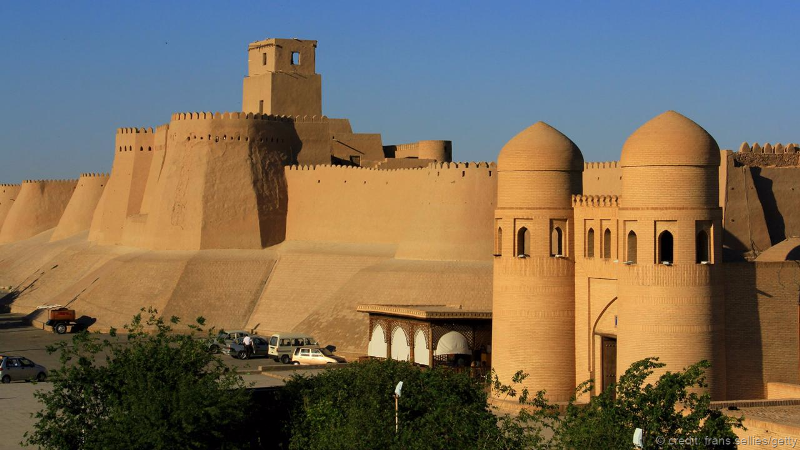
A fortified oasis
Unique within Uzbekistan, Khiva is a complete fortified oasis in the desert. The inner city, known as the Itchan Kala, is protected by 10m-high mud-brick walls, and this is where the most important monuments can be found. (Credit: Frans Sellies/Getty)
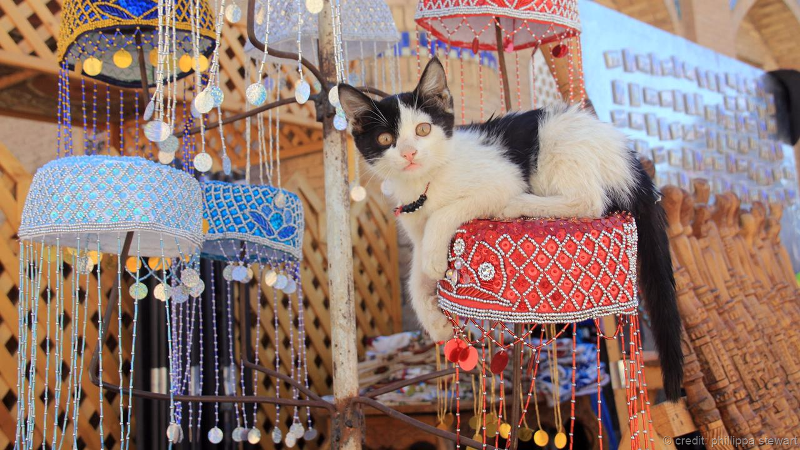
Street markets
Many of Itchan Kala's prominent buildings have street sellers outside touting their wares. This traditional red hat has found a taker. (Credit: Phillippa Stewart)
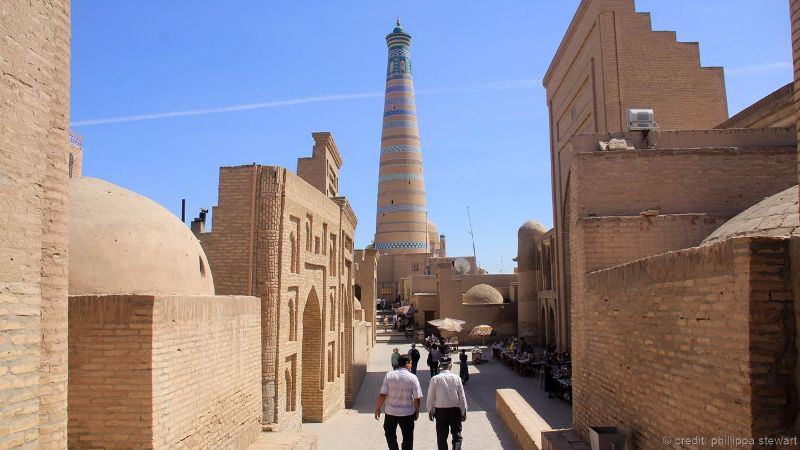
City views
Strolling through the Itchan Kala, it's hard to miss the Islām Khwaja madrasah and minaret. At 45m high, it is the tallest structure in Khiva. (Credit: Phillippa Stewart)
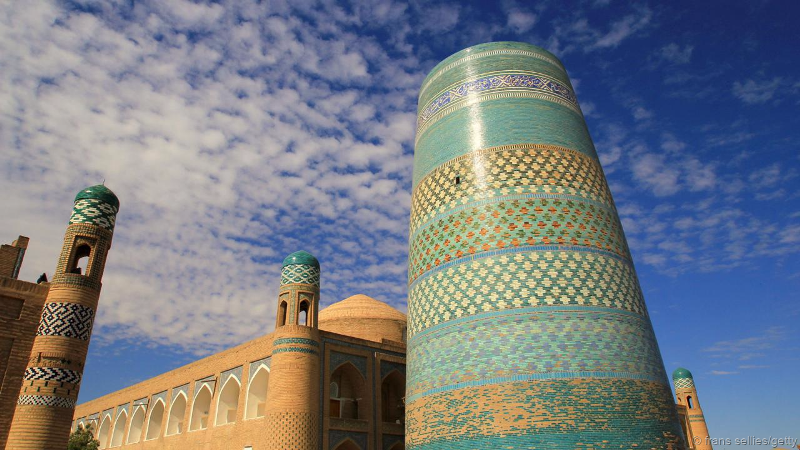
Unfinished business
One of Khiva's most iconic buildings is the short and sweet Kalta Minor minaret, which is covered in glazed, patterned tiles and whose beauty hits you as soon as you enter through the West Gate. (Frans Sellies/Getty)
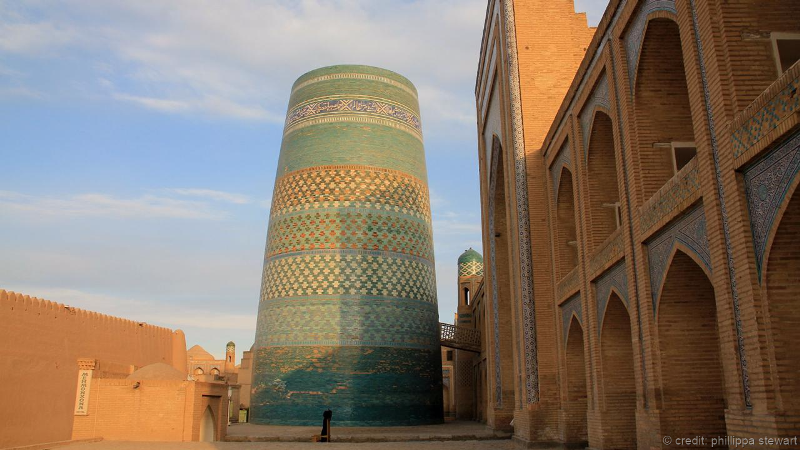
A mini minaret
According to legend, it was built by Mohammed Amin Khan, the illustrious ruler of Khiva, who wanted to build a minaret so high he could see the city of Bukhara 400km to the southeast. Work started on the tower in 1851 but came to an abrupt halt after his death in 1855, leaving the 14m-wide and 26m-high tower as is. (Credit: Phillippa Stewart)
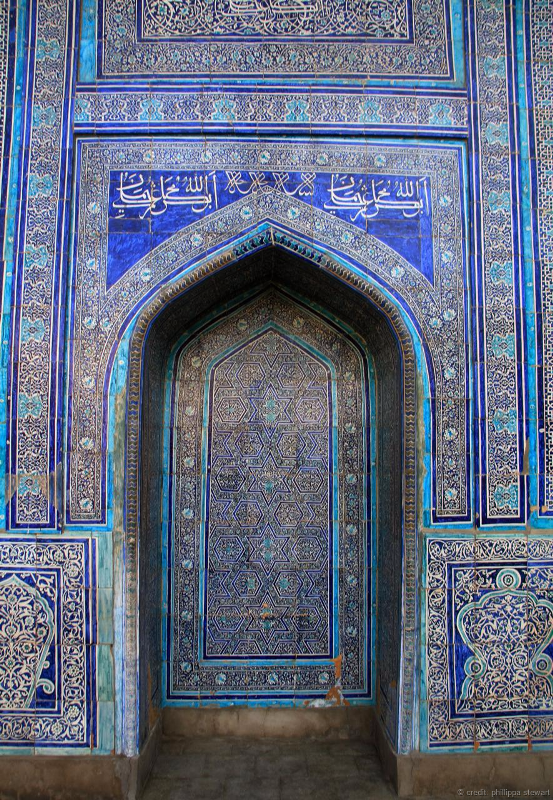
Intricate tilework
More intricate tilework can be found on the spectacularly ornate Summer Mosque (pictured), located inside the Kuhna Ark, the fortress residence of Khiva's rulers. (Credit: Phillippa Stewart)
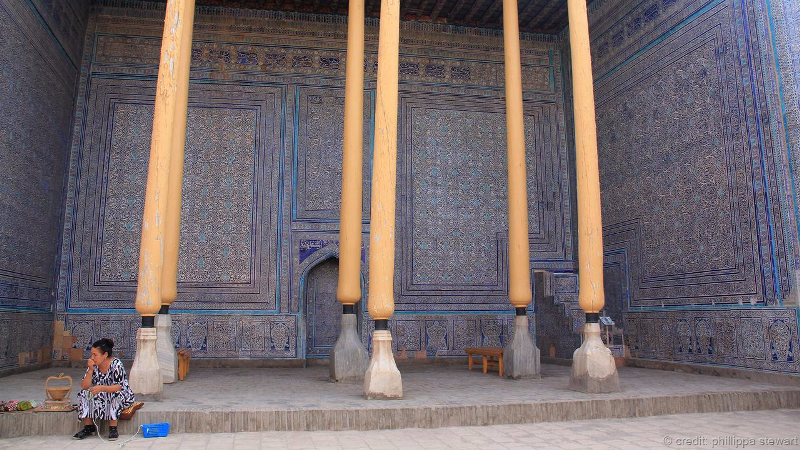
Local art
The mosque is completely covered in locally made tiles believed to date back to 1838. (Credit: Phillippa Stewart)
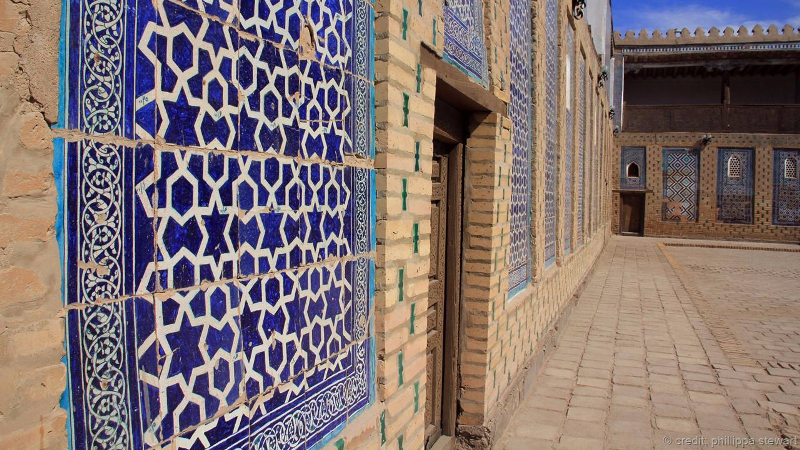
A colourful legacy
Exquisite tile work can be found in many of the buildings around Khiva. It’s worth exploring the nooks and crannies of the city to see treasures what you can discover. (Credit: Phillippa Stewart)
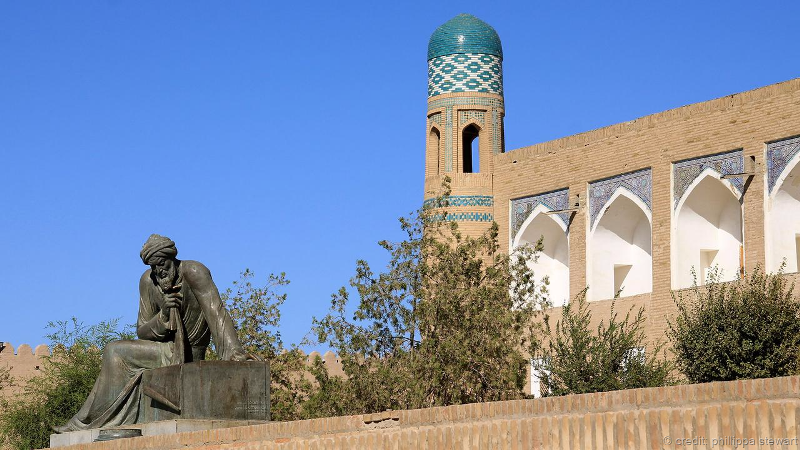
Mathematical inspiration
Central Asia was a world centre of learning for centuries, and Khiva was no exception. Abū ‘Abdallāh Muḥammad ibn Mūsā Al-Khwārizm, a Persian scholar born around 780, is sometimes called the “grandfather of computer science” and is credited with popularising the use of the decimal point. In fact, the word “algebra” comes from his algebraic mathematical treatise, called Hisab al-Jabr w'al-muqabala (The Compendious Book on Calculation by Completion and Balancing). His legacy can be seen in the statue erected outside the West Gate. (Credit: Phillippa Stewart)
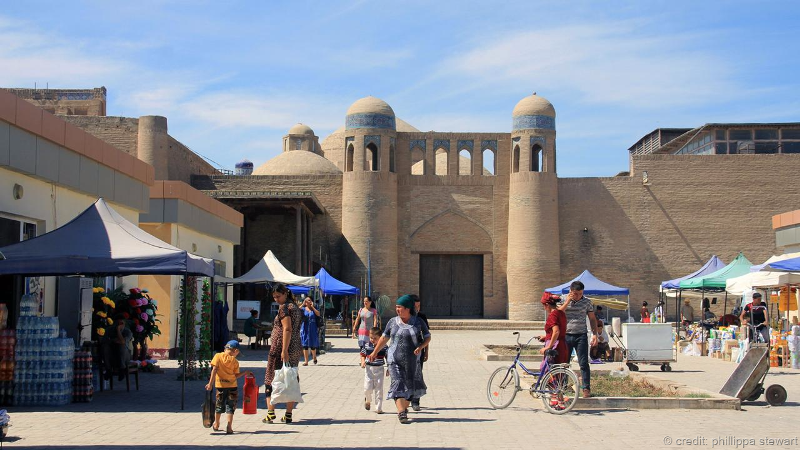
Life outside the walls
Despite the beauty within the walls, it’s worth stepping outside to where the majority of the population lives. Get a taste of local life in the bustling market – the perfect place to meander and take in the sights and sounds of the city. (Credit: Phillippa Stewart)
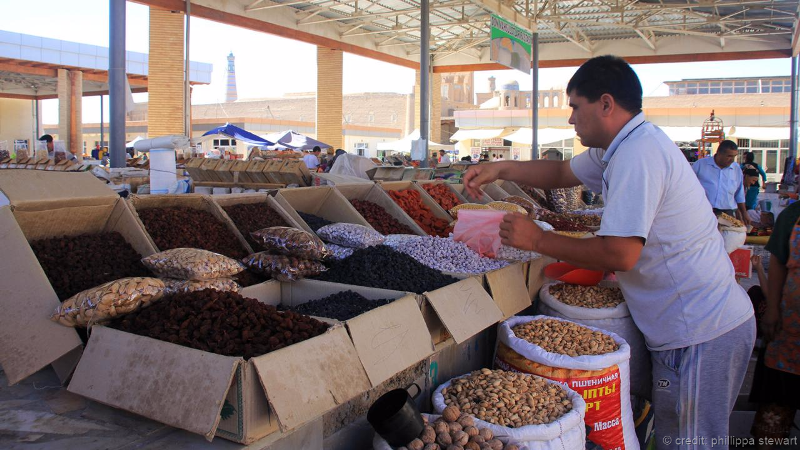
Daily shopping
To get here, leave the Itchan Kala through the East Gate; the bazaar is just outside the mud-brick walls. (Credit: Phillippa Stewart)
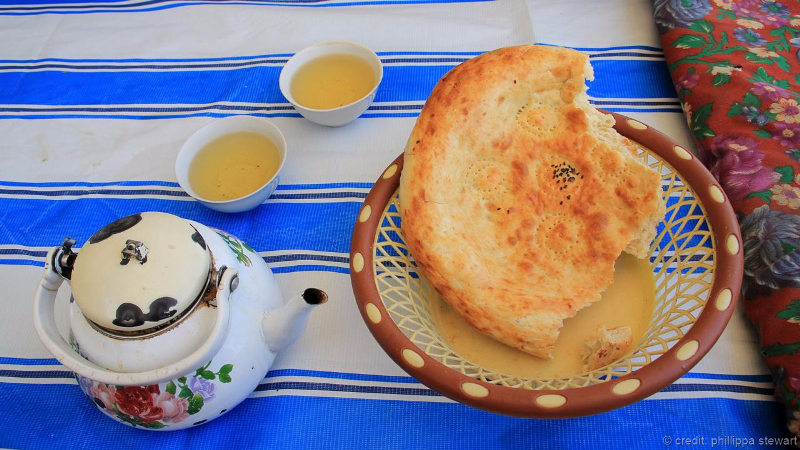
Tea time
Stopping for a cup of tea is a wonderful way to absorb the history and beauty of the city. Tea is a huge part of Uzbekistani culture, and tea houses, known as chaikhanas, are to Uzbekistan like pubs are to Britain – numerous and popular. Being given tea (either green or black) is also a sign of hospitality; typically it is drunk without milk and sugar, and meals usually start and end with a cup. (Credit: Phillippa Stewart)
By Phillippa Stewart BBC Travel